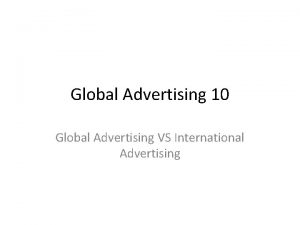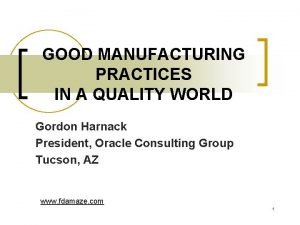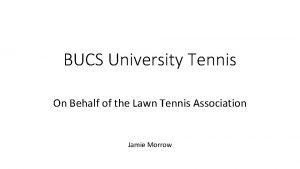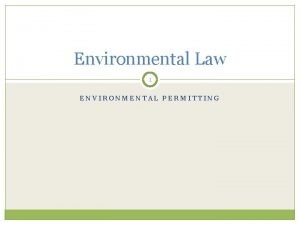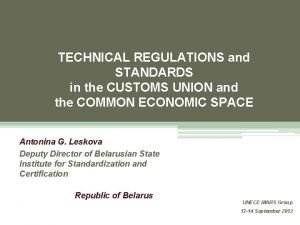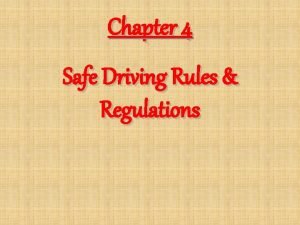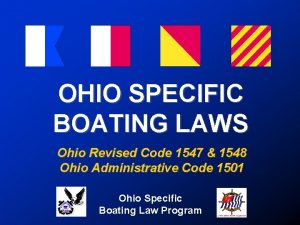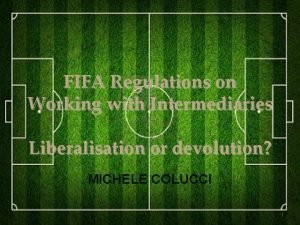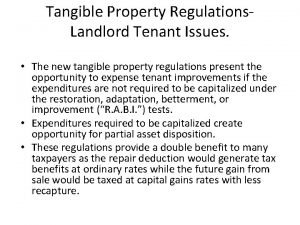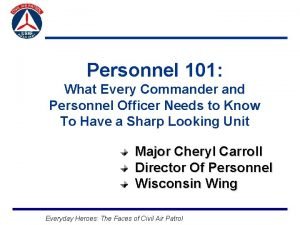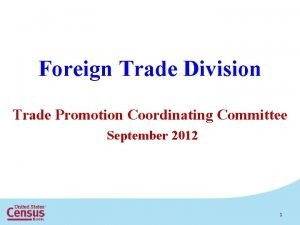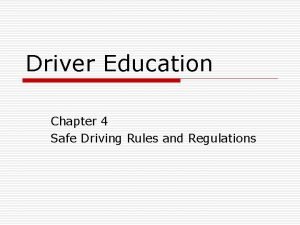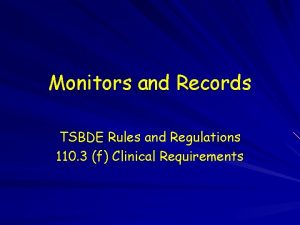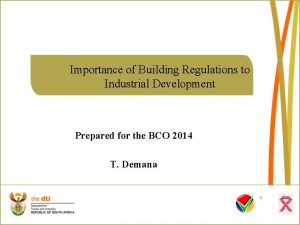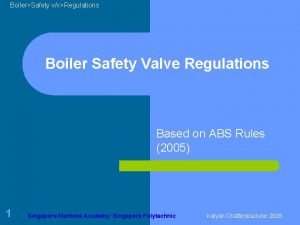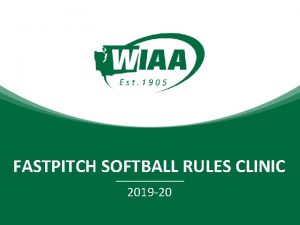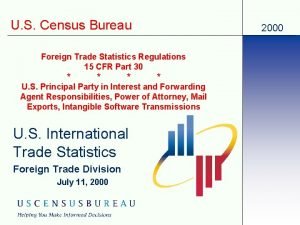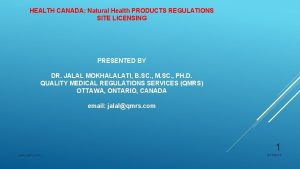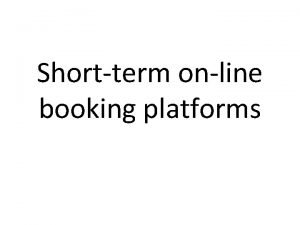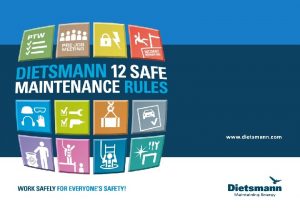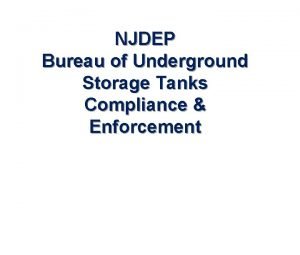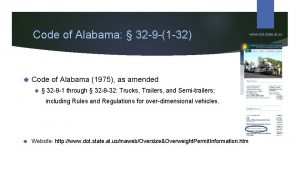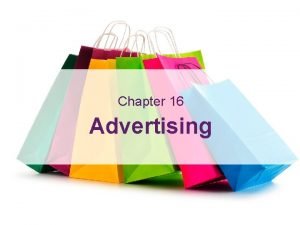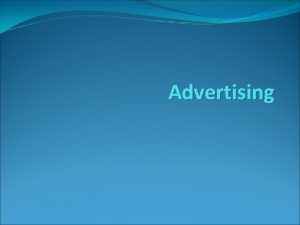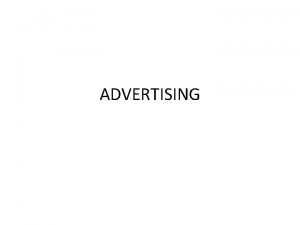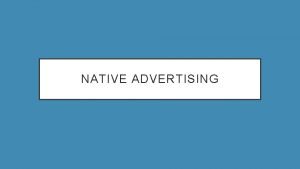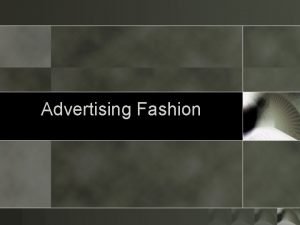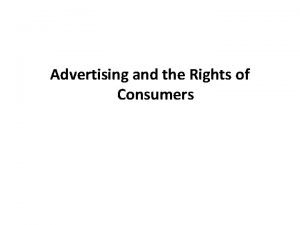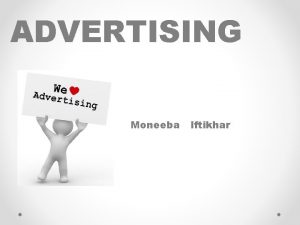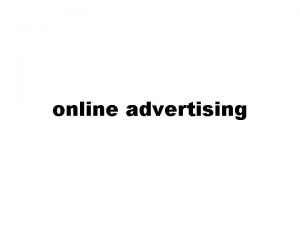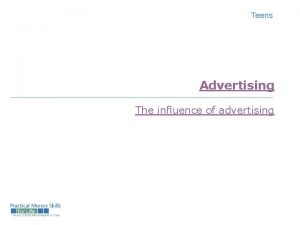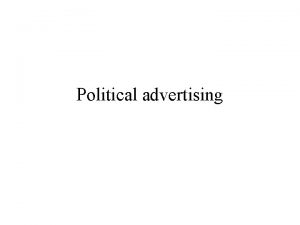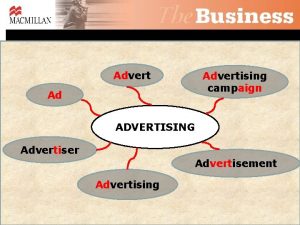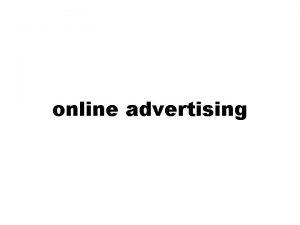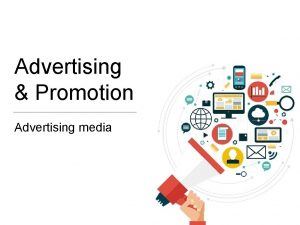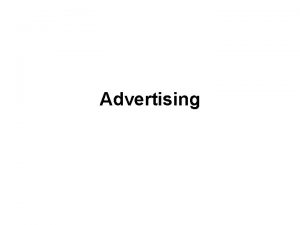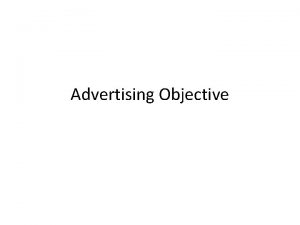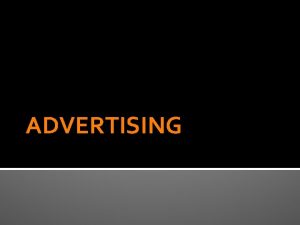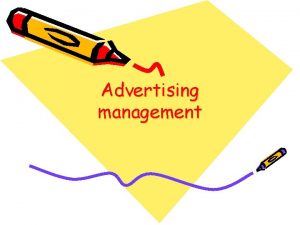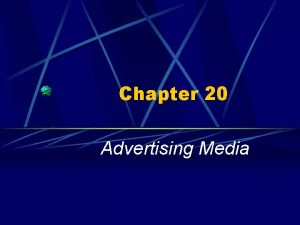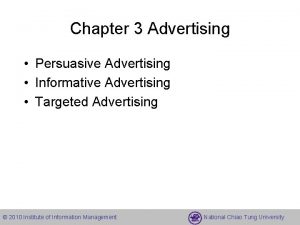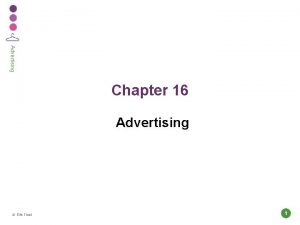Advertising Regulations What is Advertising Advertising is a









































- Slides: 41

Advertising Regulations

What is Advertising…. . ? ? • Advertising is a non-personal communication of information usually paid for and persuasive in nature about products, services or ideas by identified sponsors through various media.

What is Advertising Regulation. . ? ?

• Advertising regulation refers to the laws and rules defining the ways in which products can be advertised in a particular region. • Rules can define a wide number of different aspects, such as placement, timing, and content.

WHAT IS DECEPTIVE ADVERTISING…? ? • An advertisement is called deceptive when it misleads people, alters the reality and affects buying behaviour.

q. Promotional techniques designed to influence buyers with false or misleading claims. q. Deception exist when an advertisement that makes false claims or misleading statements, as well as advertising that creates a false impression.

WHEN IS AN ADVERTISIMENT IS DECEPTIVE…? ? ? false promises unsubstantiated claims incomplete descriptions partial disclosure or visual distortion of products • false testimonials or comparisons • •

According to Federal Trade Commission (USA) deception occurs when - 1. There is misrepresentation, omission, or a practice that is likely to mislead. 2. The consumer is acting responsibly in given circumstances 3. The practice is material and consumer injury is possible because consumers are likely to have chosen differently if there is no deception.



A Misrepresentation or Omission

1. Suggesting that a small difference is important :

2. Artificial product demonstration

3. Using an ambiguous or easily confused phrase E. g. . “govt. supported” & govt. approved”

4. Implying a benefit that does not fully or partially exist.

5. Implying that a product benefit is unique to a brand. 6. Implying that a benefit is needed or that a product will fulfill a benefit when it will not.

7. Incorrectly implying that an endorser uses and advocates the brand.

8. Omitting a needed qualification. 9. Making a claim without substantiation.

10. Bait & switch • Bait-and-switch is a form of fraud. • First, customers are "baited" by advertising for a product or service at a low price; • Second, the customers discover that the advertised good is not available and are "switched" to a costlier product.

• Bait-and-switch tactics are frequently used in airline and air travel advertising. • Hotels widely use the form of bait-and-switch tactics known as 'resort fees'. They first attract customers by advertising the lower price (which appears on all promotional materials and rate comparison engines), and charge customers the mandatory "resort fee" when they arrive for check -in.

11. Telemarketing 12. Intellectual property

Puffery – Claiming all good things about one’s own offering in order to persuade and capture the market. Ex. Snap Deal News Channels Domino’s

2 General Forms Using degrees of comparison Using Exaggerated spoofs that are untrue

Using degrees of comparison 1. v Subjective opinion about a product’s quality v “best” or “greatest” Ex. “best deals” “best offers” “greatest discounts”

2. Using Exaggerated spoofs that are untrue v Exaggeration extended to the point of out-right spoof that is obviously not true. Ex. “ 2 minutes maggie” “Mileage rates for automobiles”

Who is deceived - The Reasonable Consumer? According to FTC, essentially all are to be protected , in particular those who are q NAÏVE q TRUSTING q OF LOW INTELLIGENCE

Ex Foundation Makeup Cream (Restoring Youthfulness) Hair coloring product (color hair permanently)

In 1983, the FTC narrowed its definition of deception in an important way Previously – An advertisement was held to be deceptive if it has the tendency to deceive a substantial number of consumers in a material way Now – Consumers acting reasonably would not be materially accepted.

Outcome of a study More involved receivers more critical message analysis greater cognitive elaboration

Materiality of the Falsehood “Material Untruth”

REMEDIES

Cease-and-Desist Orders Restitution Affirmative Disclosures Corrective Advertising

Cease-and-Desist Orders üThe only formal procedure established by the FTC Act for enforcing its prohibition of “deceptive acts and practices. ” üProhibits the respondent from engaging further in the deceptive practice ü“go and sin no more” üHas procedural delays

Restitution ü Consumer is compensated for any damage. ü Full refunds for skin cream, diet plans, vitamin supplements and other products that had advertised claims not adequately substantiated.

Affirmative Disclosures “Clear and conspicuous disclosure” of the omitted information.

Corrective Advertising Rectify past deception by making suitable statements in future commercials.

COMPETITOR LAWSUITS

Firms charge that false advertising has caused them damage.

SELF-REGULATION

• A fast, flexible alternative to FTC and Courts • Complaints from consumers and competitors are investigated by the National Advertising Division (NAD), an arm of the council of Better Business Bureaus (CBBB)

Thank You……
 Global advertising and international advertising
Global advertising and international advertising Oro ftl
Oro ftl Gmp requirements
Gmp requirements Bucs tennis regulations
Bucs tennis regulations Environmental permitting regulations 2010
Environmental permitting regulations 2010 Mining regulations
Mining regulations Customs union technical regulation
Customs union technical regulation Chapter 4 safe driving rules and regulations
Chapter 4 safe driving rules and regulations Irda brokers regulations 2018
Irda brokers regulations 2018 Ohio revised code towing regulations
Ohio revised code towing regulations The provision and use of work equipment regulations 1998
The provision and use of work equipment regulations 1998 Fifa regulations on working with intermediaries
Fifa regulations on working with intermediaries Cold ironing regulations
Cold ironing regulations Partial asset disposition
Partial asset disposition Health and safety regulations in engineering
Health and safety regulations in engineering Civil air patrol patch placement
Civil air patrol patch placement Foreign trade regulations ftr
Foreign trade regulations ftr Controlled uncontrolled and blind intersections
Controlled uncontrolled and blind intersections Tsbde rules and regulations chapter 110
Tsbde rules and regulations chapter 110 Importance of building regulations
Importance of building regulations Boiler safety valve regulations
Boiler safety valve regulations Wiaa softball pitching rules
Wiaa softball pitching rules In location planning environmental regulations
In location planning environmental regulations Foreign trade statistics regulations
Foreign trade statistics regulations Korea occupational safety
Korea occupational safety Site license health canada
Site license health canada Child care facility rules and regulations
Child care facility rules and regulations Stayz noosa
Stayz noosa Part 21 j
Part 21 j Dbhds sponsored residential regulations
Dbhds sponsored residential regulations Dietsmann wikipedia
Dietsmann wikipedia Acecqa regulations
Acecqa regulations Rto rules and regulations
Rto rules and regulations Collective investment scheme regulations
Collective investment scheme regulations Graduated approach
Graduated approach Chapter 4 safe driving rules and regulations
Chapter 4 safe driving rules and regulations Chapter 8 location planning and analysis
Chapter 8 location planning and analysis Class rules and regulations
Class rules and regulations Njdep ust guidance
Njdep ust guidance Easa ftl regulations combined document
Easa ftl regulations combined document Alabama superload permits
Alabama superload permits Navy female hair regulations
Navy female hair regulations
